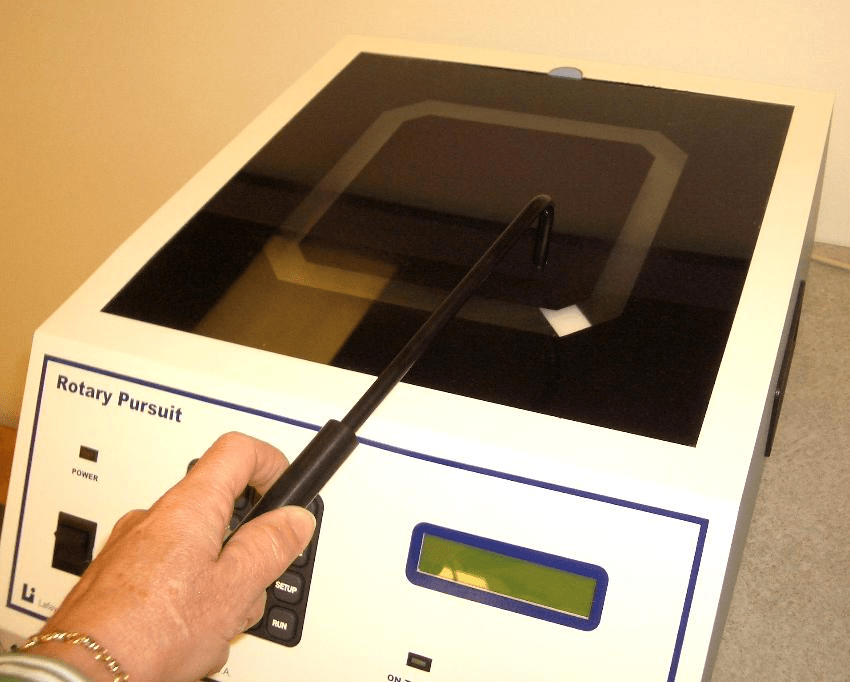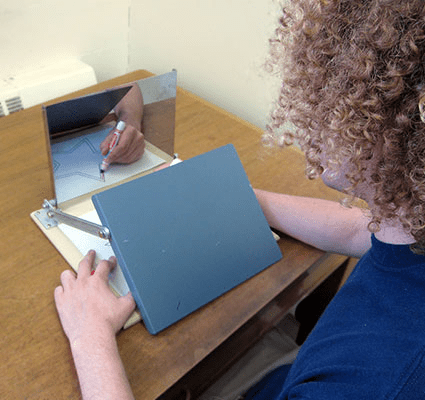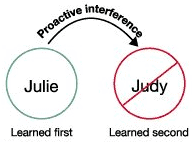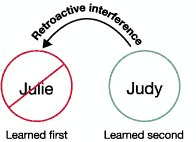Long-term memory is a mystery to cognitive psychologists because there seem to be no ends to the duration or capacity of it; however, we can also lose long-term memories for no reason.
We don't have all the answers about long-term memory, but psychologists have been able to classify them in an attempt to understand how they are stored and recalled. The two types of long-term memory are implicit and explicit memory. They contain two different types of knowledge: procedural and declarative knowledge.
(Take our free online memory test and find your results in less than 5 minutes!)
What Is Implicit Memory? (Procedural Knowledge)
Implicit Memory is the knowledge based on previous experiences that we perform almost automatically and are difficult to share with others. We are usually not aware of this type of memory, instead our brains call upon it without using conscious thought.
At any given time, we are pulling implicit memories from our procedural knowledge. This includes the conceptual knowledge of how to breathe, how to hold ourselves up, or how to walk around the room.
Note: Implicit memory is also called 'non-declarative' memory, because you can't directly recall it.
We may not be able to fully explain the facts about our breathing, but we know how to do it even when we are not consciously thinking about it. The information in this system resides outside of our conscious awareness. We don't think about how to stand up, we just do it - a prime example of an implicit memory that you have strengthened thousands of times.
Procedural memory (or 'procedural knowledge') is a type of implicit memory that is specifically knowledge of the skills we have learned. It is the knowledge of how to do something, of which we do not know that we know.
Riding a bike is a great example of procedural knowledge. Almost everyone knows how to ride a bike, but it's very difficult to explain (using words) how to ride a bike to someone who hasn't done it before.
Priming, Implicit Memory, and Internet Phenomena
People usually carry out procedural knowledge without conscious thought. Have you ever played a “word association” game? Someone will say “thunderstorm,” and you might say “scary,” or “lightening,” or “power outage.” Someone says “yellow,” and you might say “taxi,” or “banana,” or “slow down.” These are your implicit memories at work.
Priming occurs when recall is improved by prior exposure to a certain stimuli.
This process is done through priming. When we are taught about thunder, we are most likely taught that it pairs with lightning. In primary school, when we learn our colors, we may learn that a banana or a taxi is yellow.
Once this stimulus is reintroduced, the stimulus that we associate with it floods back into our memories as well. We don’t think always consciously think “slow down” (or “speed up”) when we see a yellow light, but repeated lessons primed with yellow lights influence our response.
Priming does more than just make word association games fun. It can also help us make sense of sensory input. Take the “Yanny/Laurel” phenomenon from a while back. The sensory input we received while hearing the infamous recording was ambiguous - so our brains used priming to pull up any possible related stimulus for assistance in deciphering what we heard.
Priming happens, cognitive psychologists think, because of how our brains store information hierarchically.
How to Test Procedural Memory
There are many different ways to measure procedural memory.

Rotary Pursuit Task
One of the more popular tests is the Rotary Pursuit Task. This task is simple. A computer screen displays a circle and a smaller red circle that moves on the path of the large circle. The participant’s task is to keep their mouse (or pen, if using a tablet) on the smaller circle as it travels the path around the big circle.
Then, the smaller circle will change it's path after the participant has performed the first path so many times that it's stored in long-term memory. Once the new path is introduced, the participants needs more time to get used to the new path. However, when the participant goes back to the first path they traced, they perform it without much struggle.
They can perform the first task easier, which gives evidence to relearning theory and priming.

Mirror Tracing Task
Another common test is the Mirror Tracing Task. Participants are shown and image reflected in a mirror. They must trace that image with their pencil only while looking at their hand and the image in the mirror.
While this test can feel tricky at first, people with the ability to learn and retain procedural knowledge find the mirror tracing task easier when they give it a second try. They find it easier the second, even if hours or days pass (or if they don't remember tracing an image).
What Is Explicit Memory? (Declarative Knowledge)
If procedural knowledge is the how, then declarative knowledge is the what.
Declarative knowledge, otherwise known as “fact knowledge,” is the knowledge of facts and things. This knowledge is factual. It tells us that 1+1=2, that we own a red car, or that Mozart was an Austrian composer.
We hold declarative knowledge in explicit memories.
Examples of Episodic vs. Semantic Memory
Researchers have organized our explicit memory further by splitting explicit memory into episodic and semantic memory.
One of my oldest memories is when I was probably around the age of 4-5. My dad is a firefighter and sometimes his pager would go off at night. If I was up, he would always come give me a hug before he left to go fight the fire. One night, I remember, he got a call and he left. I started crying and told my mom that I didn't get a call. So my mom called my dad, he wasn't too far away, and he came back halfway, gave me a hug, and then went back to fight the fire. This is considered an episodic memory.
We’ll use an example to show the difference between these two types of memories. Earlier, we said that explicit memory explains “what” we know. If I were to ask you, “What did you do yesterday?” you would be able to answer with your explicit memories.
You might say, “I played frisbee at Peace Valley Park with my friend Linda.” The overall memory of your trip to the park - the time you went, the images of playing frisbee, etc. - fall into your episodic memory. It plays out like an episode of television, in the order that it happened.
Episodic memory is the knowledge of the order that things in your life happened. Semantic memory is the knowledge of what without context.
Take your episodic memories out the context, including the time and place where these events occurred, and you’re left with many pieces of semantic memory. You know that Peace Valley Park is the name of a park in Bucks County. You know that your friend’s name is Linda. You know that the plastic disk you hold in your hand is a frisbee. (But the knowledge of throwing and catching that frisbee falls under the category of procedural knowledge.)
The Four Types of Amnesia
The categories that researchers use to organize different types of memory is crucial to studying memory processes and storage. For example, researchers have noticed that some types of amnesia affect episodic memory, but leave semantic memory intact.
You might have heard of amnesia in movies and television. The character suffers a head trauma, like a car accident or a large object falling on their head, and immediately forgets important memories. They can’t recognize their spouse, their children, and they don’t know what job they do.
These stories sound traumatic - and unfortunately, they do exist in real life.
There are four types of amnesia:
Infantile amnesia is fairly common. Most people cannot recall memories from the first three to four years of their life.
Transient global amnesia is an amnesia “attack” that lasts for a few hours at a time. Researchers are not really sure what causes it. Transient global amnesia can be very frustrating for the person experiencing it - luckily, it is only temporary.
The next two types of amnesia are typically caused by trauma to the brain. This trauma can be an injury or excessive alcohol and drug use.
If you’ve ever experienced a blackout, you’ve experienced anterograde amnesia. This type of amnesia prevents you from forming new memories. Once you wake up in the morning and your body has processed the alcohol out of your system, this amnesia goes away. However, long-term alcohol abuse can weaken your overall ability to transfer memories into long-term storage.
Last but not least is retrograde amnesia. This is the type of amnesia you typically see in movies. Retrograde amnesia wipes away old memories that you already placed in long-term memory storage.
Memory disorders, like dementia, may also cause varying stages of retrograde amnesia.
Learning and Relearning Long-Term Memories
Our long-term memory has limitless potential. We can remember things from decades ago. Our older memories can be just as vivid as they were when we first experienced them. But how does this process happen? How do we drum up these old memories and make them so strong in our minds?
There are four ways that we can retrieve these memories: recall, recognition, recollection, and relearning. If you are interested in strengthening your long-term memory, I would argue that relearning is the most important.
Recall: When you can pull answers out of the blue, without a cue. When something is on the tip of your ton, you are unable to recall it.
Recognition: This is very similar to what happens on a multiple choice test. You may not be able to just 'think' up the word, but if someone gives you a list of 5 possible answers, you'll be able to quickly identify the correct answer.
Recollection: This is the reconstruction of facts based on partial cues or reminders. For example, if I asked you what the capital of Missouri was, and then I gave you the cue "3rd U.S. President", you could recollect that the capital was Jefferson City.
Relearning: Relearning is self-explanatory. We retrieve information when we learn it again. This retrieval and review makes the memory stronger. The more you relearn information for school, the more likely it’s going to stick in your mind and come up when you need to recall or recognize it.
Can You Improve Your Long-Term Memory?
There are a lot of tricks that can help you strengthen your long-term memory. But one of the best “tricks” for memory strength doesn’t require you to be awake. As you sleep, different parts of the brain are still at work.
Where Is Long-Term Memory in the Brain?
The hippocampus is working hard to put episodic memories into your long-term memory. The night after you went to Peace Valley Park, for example, your hippocampus was storing your frisbee game away in long-term memory storage, especially if it was an emotional event to you - like a first date.
The neocortex works to put semantic memories in long-term storage. The amygdala adds yet another layer to your long-term memories. It focuses specifically on the emotions that drive your memories. The happiness you felt playing frisbee, or the fear you experienced when your dog got off the leash at the park, are all memories handled by the amygdala.
During sleep, these three parts of the brain work hard to sort out which memories head into long-term storage, and then they keep them there. If you aren’t getting the recommended amount of sleep each night, you could be losing the chance to store away important memories.
Cognitive psychologists aren't completely sure how memories are stored, but they do know which parts of the brain are active when the storing is taking place.
Other Ways to Improve Long-Term Memory
Sleep isn't the only way to keep your brain healthy and functioning. This Reddit post for more tips on storing long-term memories:
- From u/IWantItAllLove: "Taking omegas 3, 6, 9 and eating foods that contain them are healthy for your brain. Not smoking or drinking can help a little too."
- From u/depressed_addict: "There is no way to completely halt this from happening, but I have been using phone apps with word games and it seems to help. There are other apps that are targeted specifically for increasing memory and brain health, so you may want to look into those, too."
- From u/nonaumatic: "Keep a journal maybe, reminisce about the things you've done with the people you did it with, the more actively you talk about it the longer it'll stay in your memory. Not full proof but may help."
How Long Term Memory is Affected: Interference Theory
Storing information doesn’t always work the way you want it to. When your brain tries to connect old memories to new information, things can get twisted. Have you ever called your partner by your ex’s name? Ever taken an old route home, only to remember that you’ve moved?
These embarrassing occurrences can be explained by the Interference Theory.
There are two different types of interference that can affect your ability to recall information correctly: proactive and retroactive interference. They’re direct opposites.
Proactive Interference

Proactive interference occurs when current information interferes with your ability to dig up information from your long-term memory. If we go back to the example involving calling a partner the wrong name, you would be calling your ex by your current partner’s name.
In the proactive interference example above, someone may try to remember a friends name as "Judy", however they have another friend who was named Julie. They keep calling their new friend the wrong name because of a past memory.
Retroactive Interference

Retroactive interference is just the opposite. If you call your current partner by your ex’s name, then retroactive is at work.
It’s when old information comes to the surface and interferes with your ability to process more recent information.
In the retroactive interference example above, someone might make a new friend named Judy. After this interaction, the person can no longer remember their old friend's name (Julie) because of their new memory.
How To Test Your Long-Term Memory
Most likely, you already have an idea about the strength of your memory. If you have trouble recalling words or hear about events that you were at (but don’t remember,) you might not feel so great about your ability to move memories into long-term storage.
But researchers use different methods to get a more precise idea about a patient’s ability to store memories. You may recognize some of these tasks from studies mentioned in earlier videos. Other tasks are common on standardized tests.
Recognition Tasks
Earlier in the video, we talked about the four types of retrieval. Researchers use memory tasks to test the first two forms of retrieval: recall and recognition.
Recognition tasks are slightly different than recall tasks. Both tasks typically start with researchers giving participants a list of words or other stimuli to memorize. But the difference arrives once the material is memorized. Researchers then put stimuli in front of participants and ask them whether or not they recognize said stimuli.
Recall Tasks
Recall tasks require a different type of memory retrieval. After the material is memorized, researchers will simply ask the participants to list as many words or parts of the material as they can recall.
There are two types of recall tasks: free recall and cued recall. Free recall simply asks participants to recall information without any assistance. Cued recall will use categories, clues, and other information to help participants retrieve memories and information.
